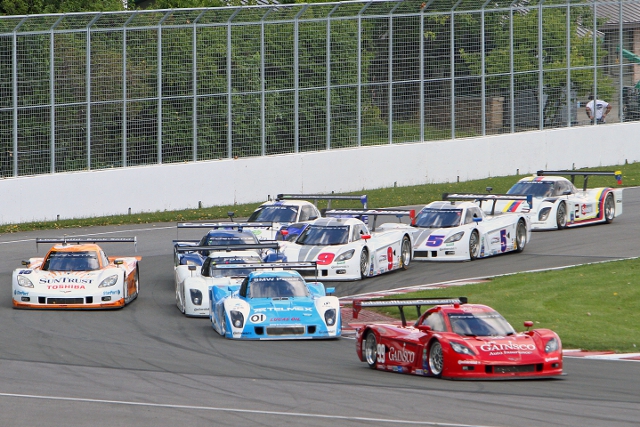Officials of the Grand–Am Road Racing organisation and the American Le Mans Series have announced the initial concept for the class structure for the single merged series the two will create for the 2014 season.
Grand-Am’s managing director of competition Richard Buck describes the plan as “a ‘best of both worlds’ approach that reflects the fact we have a true merger evolving on a daily basis.” A majority of the two series’ current classes will be carried forward to the new championship. The only casualty – as expected – is the LMP1 class of the ALMS.
In its absence the premier class of the 2014 series will be a prototype class combining the ALMS’ LMP2 class and the Daytona Prototypes of the Rolex Series. The class will also host the DeltaWing design, with balancing of performance between the different specifications of car in an attempt to ensure close racing.
The LMPC class of the ALMS will also continue, though as a separate class.
The series respective GT classes will also both continue, running as separate classes, the ALMS GTE class continuing as promised in the press conference that first announced the historic deal between the rival series. The GTC class than runs in the ALMS will be subsumed into the Rolex Series’ GT class.
Still being discussed is the fate of the GX class, set to debut at the Rolex 24 at Daytona later this month. The class could be added to the Rolex Series GT class for 2014, or continue as a separate, fifth, class.
The uncertainty over the exact make-up – and number – of the classes for the series indicates that the plans are still at a relatively early stage, something Buck reiterates.
“And this announcement is only a first step in solidifying our class structure. Our organizations’ respective competition departments are working diligently on balance of performance for the top prototype class, plus overall class specifications across the board.”
“This process is not being rushed. We are carefully gathering input from drivers, teams and stakeholders throughout the sports car industry, emphasizing inclusion, as we work toward a simple – but also complex – goal: we want to get it right the first time.”
“Numerous important partners and stakeholders have been invaluable during this process,” echoed ALMS COO Scot Elkins. “We could not have reached these decisions as rapidly as we did without that assistance. Many factors were taken into consideration for this initial conceptual line-up, but the priority was to enable as many current competitors as possible to continue racing with their existing equipment.”
“We also want to thank the Automobile Club de l’Ouest (ACO) for its input as we strive to maintain the important ability of teams to qualify for and race in the 24 Hours of Le Mans.”



